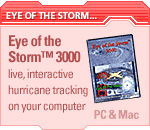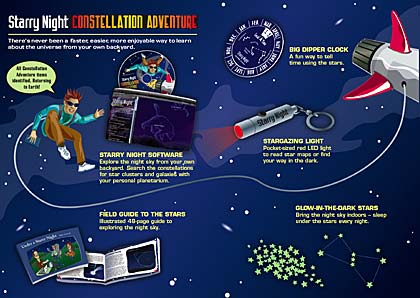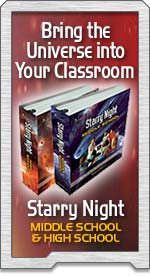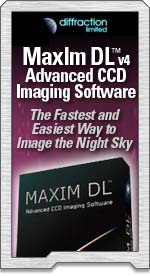 |
||||||||||||||||||||||||||||||||||||||||||||||||||||||||
|
If you have trouble viewing this newsletter, click here. Welcome again to our monthly newsletter with features on exciting celestial events, product reviews, tips & tricks, and a monthly sky calendar. We hope you enjoy it!
First Steps in the Deep Sky Late summer is the perfect time to begin exploring the deep sky: the objects beyond our solar system and local stars. Under a dark sky, the Milky Way stretches from the southern horizon to overhead and beyond to the northern horizon. As we look towards Sagittarius, we can see the most brilliant gems surrounding the center of our galaxy. The birth of stars takes place in diffuse nebulae, clouds of glowing gas laced with dust, deep within our galaxy. After the dust and gas disperse, we are left with galactic star clusters, sometimes called open clusters. The last gasps of dying stars are seen as ghost-like planetary nebulae, looking like stellar smoke rings. On either side of the disk of our mighty galaxy are hordes of densely packed globular clusters, each containing a hundred thousand stars or more. And beyond our galaxy are countless more galaxies. Where to start? Messier Hunting Many amateur astronomers follow in the footsteps of Charles Messier, an 18th century observer of comets who made a catalog of objects in the sky which might be confused with comets, to make his searches easier. His catalog of 110 objects includes the brightest and best of the whole cosmic zoo of deep sky objects. Most astronomers refer familiarly to these objects by their “M numbers”: the numbers Messier gave them in his list, though many of them have other names. Take the Tour If you have a computerized telescope, such as the Orion IntelliScope, you can call up “sky tours” for any particular night in the year. The IntelliScope tour for August starts out with two beautiful galactic clusters, the 6th and 7th objects cataloged by Messier, The next three objects on the tour are three of the finest diffuse nebulae in the sky: the Lagoon Nebula (M8), the Swan Nebula (M17), and the Trifid Nebula (M20). You have probably seen colorful images of all three made with large telescopes. The view through an amateur telescope is quite different. Our eyes are not sensitive to color in dim light, so we see these nebulae as shades of grey against a black background. In fact, if we try to observe them in the light polluted skies of a city, or on a bright moonlit night, we may not see them at all! These are true “nebulae,” the Latin word for cloud, although they are clouds not of water vapor, but of hydrogen and oxygen gas, glowing in response to the bright young stars within them, to which they have just given birth. Two more objects in the August tour represent the other end of a star’s lifetime. The so-called “planetary nebulae” are shells of gas blown off by stars towards the very ends of their lives. The Ring Nebula (M57) is a tiny smoke ring; you may need to use at least 100x magnification to see that it is a perfect little oval ring, and not a star. The Dumbbell Nebula (M27) is much larger and more diffuse than the Ring; it looks like a small puff of smoke. The next two August objects are globular clusters, M13 and M92, both in the constellation of Hercules. Unlike galactic clusters, which are relatively small and located within our galaxy, globular clusters are much larger, denser, and located above and below the disk of our galaxy. In a small telescope, they appear like smudges of light, but as the aperture of the telescope increases, more and more of their thousands of stars are resolved into tiny pinpoints of light. This is one of the situations in astronomy where aperture wins! The August tour ends up with another open cluster, M11, and two of the finest multiple stars in the sky: the brilliantly colored Albireo and the Double-Double in Lyra. Use a high magnification on the last, and you will see that each of the “stars” in the double is in fact a very close pair, four stars in all. You may have noticed that there are no galaxies on the August tour. That’s because our own galaxy, the Milky Way, dominates the August sky, and effectively blocks the light from lesser galaxies. On the whole, galaxies are much more challenging than the objects I’ve discussed here, and are best left until you have more experience with seeing the denizens of the deep. Nebula Filters As I mentioned above, planetary nebulae and diffuse nebulae may be hard to see under less than perfect conditions, but there is a way of enhancing their visibility. Both types of nebulae give off light of very specific wavelengths, as compared to light pollution and moonlight which encompass the whole spectrum. I put this new filter to the test on a recent night, using the objects on the August tour. To make matters tough, I made my observations with a bright 10-day-old Moon right in the middle of Sagittarius! The Lagoon Nebula was only 5 degrees from the Moon. I didn’t expect to see much, but the brighter western half of the nebula was faintly visible without a filter using the 25mm eyepiece in the Orion XT6. Using the UltraBlock made the western half much clearer, but switching to the O-III filter made the elusive eastern half plainly visible too. The Trifid Nebula was overwhelmed by the Moon (7 degrees away) without a filter and even with the UltraBlock, but could be seen as a faint glow with the O-III filter. The Swan Nebula was farther away from the Moon, 13 degrees, and was visible without a filter as a vague glow. Its swan shape became visible with the UltraBlock, and stood out very sharply with the O-III filter. The Dumbbell and Ring Nebulae were both about 60 degrees away from the Moon, and so not affected much by its light. Even so, the Dumbbell changed from a diffuse glow to a clear two-lobed shape as I switched to the UltraBlock and then the O-III. The Ring Nebula was the only object where I preferred the unfiltered view. Part of the beauty of the Ring for me is how it sits as an alien ring amidst the stars surrounding it. The filters dimmed the stars so that the ring appeared in isolation without its context.
As a final test, I took a look for the famous Veil Nebula in Cygnus, the aftermath of an ancient supernova explosion. Even though it was over 70 degrees away from the Moon, it was totally invisible without a filter and with the UltraBlock. But with the O-III, it formed a huge glowing arc across the sky, overflowing my widest field eyepiece. Deep sky filters are standard equipment in my astronomer’s toolbox. Geoff Gaherty
So Far and Yet So Near The Mars Reconnaissance Orbiter recently blasted off for Red Planet with six instruments designed to track Martian weather, resolve objects on the surface the size of a kitchen table, and measure the planet’s composition and atmospheric structure with more detail than ever before. Back on Earth, those of us with telescopes are also being treated to views the likes of which will not be seen again for quite some time. At 69 million kilometers, the visual magnitude of Mars on Oct. 30, 2005, will be -2.3. Even inattentive sky watchers will notice it, rising at sundown and soaring overhead at midnight. Although closest approach is still months away, Mars is already conspicuous in the early morning. Before the sun comes up, it's the brightest object in the eastern sky, really eye-catching. If you have a telescope, even a small one, point it at Mars. You can see the bright icy South Polar Cap and strange dark markings on the planet's surface. https://space.com/spacewatch/050819_mars_guide.html Anthony Duignan-Cabrera and Leonard David, SPACE.com writers
Object Bigger than Pluto Discovered, Called 10th Planet Astronomers have discovered an object in our solar system that is larger than Pluto. They are calling it the 10th planet, but already that claim is contested. The new world's size is not at issue. But the very definition of planethood is. It is the first time an object so big has been found in our solar system since the discovery of Pluto 75 years ago. The new object, temporarily named 2003 UB313, is about three times as far from the Sun as is Pluto. To receive the data updates for the new planet in Starry Night, please be sure to go to the LiveSky Menu and click on "Update Comets/Asteroids/Satellites". The updates will appear in the SkyGuide, and you will be able to instantly find "2003 UB313" using the "Find" pane. Robert Roy Britt
|
August 2005
|
|||||||||||||||||||||||||||||||||||||||||||||||||||||||
|
Coming this September! Starry Night Constellation Adventure For ages 9 and up, Constellation Adventure is packed with the tools every young astronaut needs to explore the Universe. Includes Starry Night software, the best personal planetarium; Under a Starry Night book, an illustrated 48-page field guide to the night sky; Big Dipper Clock, a fun way to tell time using the stars; pocket-sized red LED light to read star maps; 30 glow-in-the-dark stars to create your own starry spacescape.
|
||||||||||||||||||||||||||||||||||||||||||||||||||||||||
|
On The Road Below, Starry Night's Pedro Braganca and Herb Koller guide participants through a lesson-creation exercise using Starry Night Middle School and High School at the Spitz Digital Institute 2005. To set up a Starry Night Training Day for your school district, please contact Emily Wood at <ewood@imaginova.com>.
|
||||||||||||||||||||||||||||||||||||||||||||||||||||||||
|
M6 and M7, two open clusters, are bright and obvious in Sagittarius, and make for easy binocular objects. Telescopes open up both in rich detail and M6 is seen to be aptly named "The Butterfly Cluster". NGC 6416 is a small open cluster and NGC 6383 is a dim, wide cluster with nebulosity. M8 "The Lagoon Nebula" is the brightest nebula after the great Orion nebula. It's actually more massive than M42 but is farther away: 4,500 lightyears distant compared with 1,500 lightyears. M8 is best viewed with a wide-field eyepiece. Less spectacular, but still worth some time, M20 "The Trifid Nebula" is also easily seen in binoculars; a telescope will bring out the dust band that gives the nebula is shape and name. M21 is a small rich open cluster in the same field of view as M20. M23, excellent in small scopes, is an open cluster seen in binocs, as is M25. M24 "Delle Caustiche" is a large and lovely "frothy" looking region seen easily in binoculars. It's actually part of the Milky Way and only stands out as a distinct patch because, like M23 and M25, it sits in front of a dark nebula that obscures our line of sight to the core of the galaxy. (By the way, the very center of our galaxy is marked above with a red target symbol.) M22 is a sweet globular cluster, the third-brightest in the sky. Populated by half a million stars, it's distant by a mere 10,000 lightyears, making it the nearest glob to Earth. M16 and M17 are two nebulae, the latter in particular a rewarding target. M16, however, is notable for being the location of "The Pillars of Creation" the iconic image produced by the Hubble Space Telescope. M18 "The Black Swan" is a pretty open cluster with about 40 members, surrounded by fainter background stars in the band of the Milky Way. Sean O'Dwyer, Starry Night Times Editor
|
||||||||||||||||||||||||||||||||||||||||||||||||||||||||
|
This recent image of Uranus was shot in Strongsville, Ohio, through Lynn M. Laux's Meade 8" SCT LX200 Classic. Uranus' green coloration (due to its methane atmosphere absorbing other colors) is quite clear and the view is representative of what can be seen of Uranus through a telescope.
Photo Notes: Meade 8" SCT LX200 Classic (D=203 mm, F=2000 mm, f/10). Image processing: K3CCD Tools 2 used to capture 50 seconds of AVI at 10 fps. Best 70% of frames selected, aligned and stacked using K3CCD Tools 2. Converted to 3 frames of R, G, B Fits files. Aligned and processed in Registax 3. Unsharp mask, conversion to JPEG in Paint Shop Pro 8. PHOTO OF THE MONTH COMPETITION: We would like to invite all Starry Night users to send their quality astronomy photographs to be considered for use in our monthly newsletter. Featured submissions (best of month) will receive a prize of $25 USD. Please read the following guidelines and see the submission e-mail address below.
|

|
|||||||||||||||||||||||||||||||||||||||||||||||||||||||
 |
||||||||||||||||||||||||||||||||||||||||||||||||||||||||
|
|
||||||||||||||||||||||||||||||||||||||||||||||||||||||||

 If you place a special
If you place a special 







